Parking sensors have become nearly ubiquitous in modern vehicles, promising to make the often stressful task of parking easier and safer. These technological aids use ultrasonic waves, cameras, or radar to detect objects around your vehicle and alert you through visual, audible, or haptic feedback.
However, not all parking sensors are created equal. While some genuinely enhance the driving experience by providing reliable assistance when maneuvering in tight spaces, others can be frustratingly oversensitive, constantly beeping and flashing for non-threats.
The difference between a helpful parking sensor system and an annoying one often comes down to the quality of its detection algorithms, sensor placement, and alert calibration.
The best systems provide clear, timely warnings that give drivers confidence without causing alarm fatigue. The worst can make parking more stressful than it would be without any assistance at all, constantly crying wolf until drivers begin to ignore or disable the system entirely.
This comprehensive guide examines both sides of the parking sensor spectrum. We’ll explore five parking sensor systems that truly deliver on their promise to make parking less stressful and more precise.
These systems provide accurate, timely warnings without overwhelming the driver with false alarms. Then, we’ll contrast these with five notoriously hypersensitive systems that may have you reaching for the “off” button due to their tendency to react dramatically to harmless obstacles like small puddles, leaves, or even nothing at all.
Whether you’re in the market for a new vehicle or trying to understand your current parking sensor system better, this analysis will help you distinguish between genuinely helpful technology and features that might just add to your driving frustration.
5 Parking Sensors That Actually Help
These perfectly calibrated systems provide precise distance feedback with clear, intuitive warnings that genuinely enhance parking confidence without creating unnecessary stress.
Their intelligent programming distinguishes between genuine obstacles and harmless environmental factors like snow, leaves, or slight inclines that trigger false alarms in lesser systems.
Advanced sensor placement and signal processing create comprehensive coverage without blind spots, ensuring drivers receive accurate information about their entire surroundings.
Owners appreciate the thoughtful progression from subtle initial alerts to more urgent warnings as obstacles approach, creating a natural extension of spatial awareness rather than an anxiety-inducing distraction.
1. Bosch Ultrasonic Parking System
The Bosch Ultrasonic Parking System has established itself as the gold standard in aftermarket parking assistance technology, and for good reason.
This system employs a sophisticated array of ultrasonic sensors that deliver exceptional accuracy and reliability across various driving conditions, making it a valuable addition to any vehicle lacking built-in parking assistance.
What truly sets the Bosch system apart is its intelligent signal processing technology. Unlike many competitors, Bosch engineers have developed advanced algorithms that effectively distinguish between genuine obstacles and environmental factors.
The system expertly filters out false positives triggered by rain, snow, or uneven terrain, scenarios where lesser systems tend to flood drivers with unnecessary warnings.
This refined discrimination means drivers receive alerts only when genuinely warranted, building trust in the system’s feedback. Installation flexibility represents another significant advantage of the Bosch system.
The sensors can be positioned at optimal points around the vehicle, allowing for customization based on the specific dimensions and blind spots of different vehicle models.
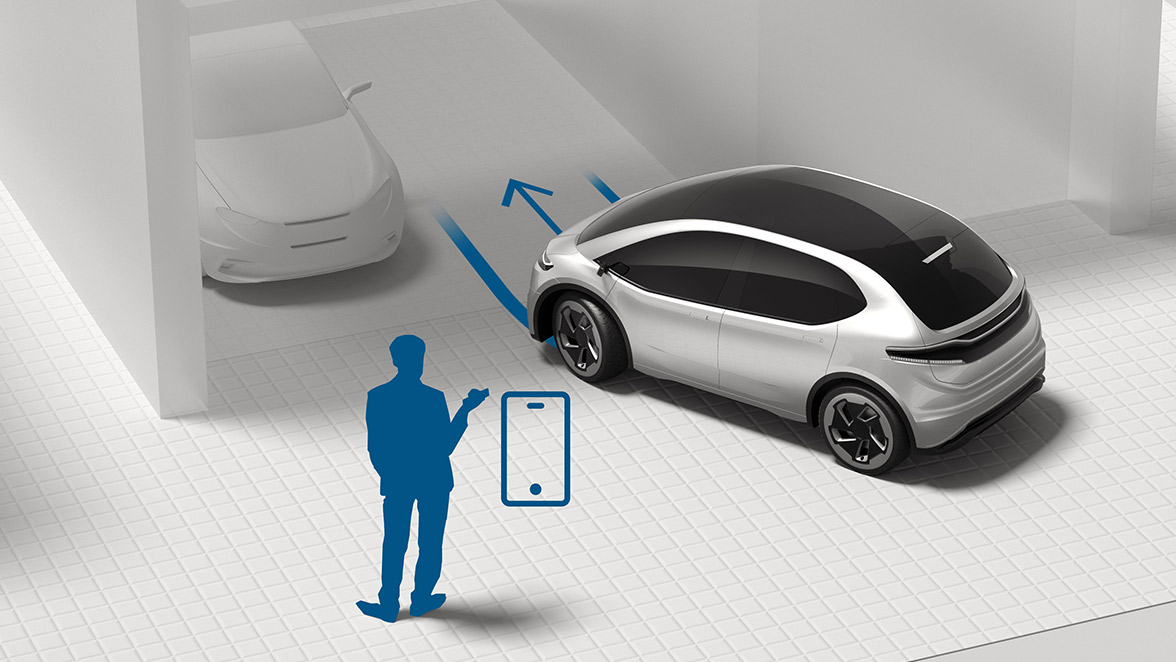
This adaptability ensures comprehensive coverage without overwhelming the driver with redundant information from areas already visible. The user interface deserves particular praise for its intuitive design.
The distance indicator provides clear, graduated tones that increase in frequency as objects get closer, while the visual display offers precise distance measurements in centimeters or inches.
This multi-sensory approach allows drivers to maintain focus on their surroundings while still receiving critical information about potential obstacles. Many users report that this balanced feedback system significantly reduces the cognitive load associated with parking in tight spaces.
Durability also stands out as a key strength of the Bosch system. The sensors are built to withstand extreme temperatures, moisture, and even minor impacts conditions that frequently cause failures in lower-quality systems.
This reliability translates to consistent performance throughout the system’s lifecycle, rather than the degradation of accuracy often experienced with budget alternatives.
For drivers seeking a parking assist system that provides genuine help without unnecessary interruptions, the Bosch Ultrasonic Parking System delivers proven performance that justifies its premium positioning in the market.
2. Mercedes-Benz Parktronic with Active Parking Assist
Mercedes-Benz’s Parktronic with Active Parking Assist represents the pinnacle of integrated parking sensor technology, demonstrating how thoroughly engineered systems can transform the parking experience.
This sophisticated package combines precision sensors with autonomous capabilities to create a genuinely helpful parking assistant that enhances driver confidence rather than eroding it.
The foundation of Parktronic’s excellence lies in its sensor calibration and placement. Mercedes engineers have meticulously tuned the ultrasonic sensors to respond appropriately to actual obstacles while maintaining composure around common false-trigger scenarios.
The system employs twelve strategically positioned sensors that work in harmony to create a comprehensive detection field around the vehicle. These sensors communicate with the vehicle’s central computer, which applies sophisticated filtering algorithms to distinguish between genuine hazards and innocuous elements like small vegetation or light precipitation.
What elevates Parktronic beyond mere obstacle detection is its Active Parking Assist functionality. The system doesn’t just warn you about obstacles, it actively helps identify suitable parking spaces and can autonomously handle steering while guiding acceleration and braking.

This comprehensive approach addresses the full spectrum of parking challenges rather than simply alerting drivers to potential collisions. The system even accounts for turning radius and vehicle dimensions when identifying suitable spaces, preventing those frustrating situations where a vehicle is directed toward a spot that’s ultimately too small.
User interface design significantly contributes to Parktronic’s effectiveness. The system communicates through an intuitive combination of visual displays on the central console screen and subtle audio cues that vary in intensity based on proximity to obstacles.
This graduated response prevents the jarring experience common with less sophisticated systems that seem to jump from silence to urgent alarms with little warning. Instead, drivers receive proportional feedback that allows for smooth, controlled adjustments.
Mercedes-Benz regularly updates the Parktronic system’s software to refine its performance, demonstrating a commitment to continuous improvement rather than viewing parking assistance as a static feature.
These updates often incorporate machine learning elements that help the system better distinguish between various types of obstacles and adapt to individual driving patterns.
For drivers seeking a parking sensor system that genuinely aids rather than irritates, Mercedes-Benz Parktronic with Active Parking Assist represents one of the most thoughtfully engineered and practically helpful options available in the automotive market today.
3. Hyundai Surround View Monitor System
The Hyundai Surround View Monitor System exemplifies how thoughtful implementation of parking assistance technology can benefit drivers across various price points.
Rather than reserving comprehensive parking aids for luxury vehicles, Hyundai has democratized this technology by offering a remarkably effective system in their mid-range models, delivering genuine utility without the false alarms that plague many competitors.
At the heart of Hyundai’s system is a network of strategically placed cameras that work in concert with traditional ultrasonic sensors. This hybrid approach addresses the limitations inherent in purely ultrasonic systems by providing drivers with both distance measurements and visual confirmation of their surroundings.
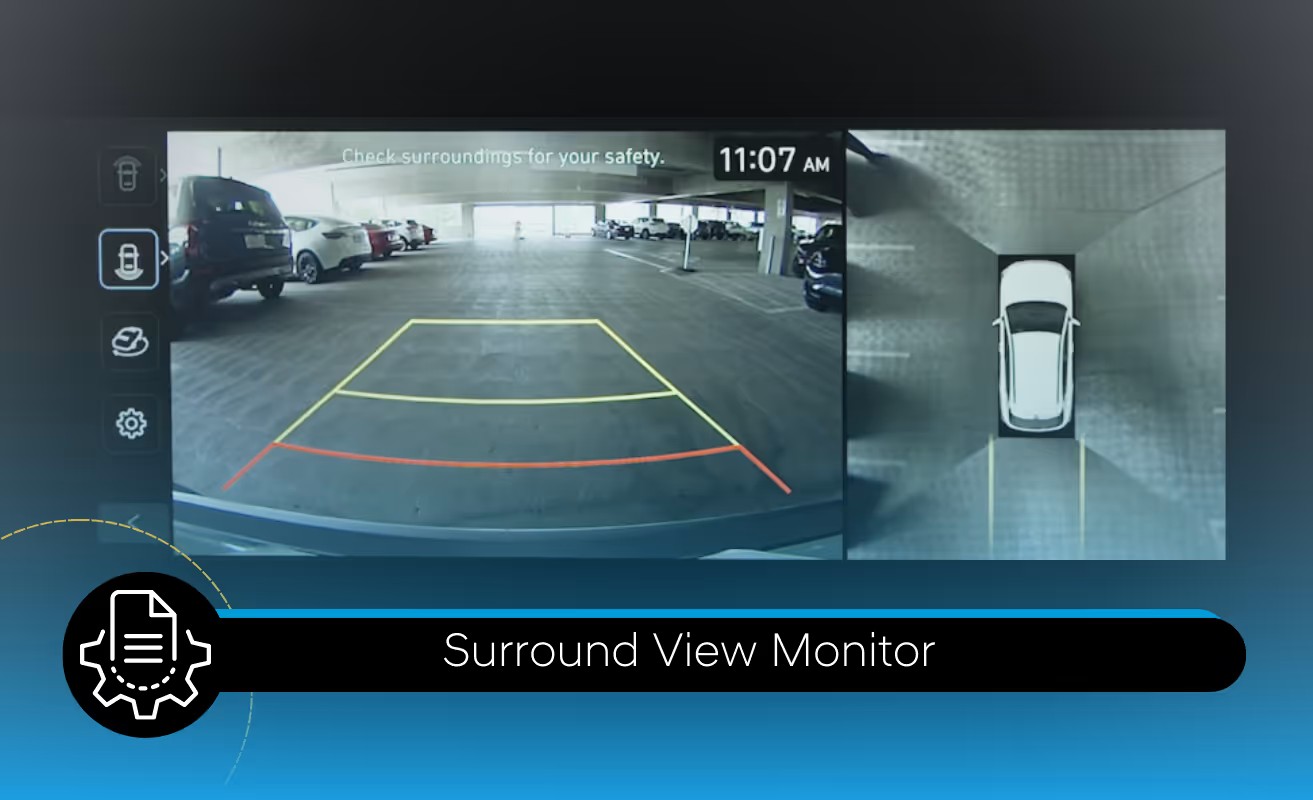
The cameras are positioned to eliminate blind spots, creating a seamless 360-degree bird’s-eye view of the vehicle that appears on the central display.
This visual information proves invaluable when maneuvering in complex environments like shopping center parking lots or crowded urban spaces.
What distinguishes Hyundai’s implementation is its context-aware detection capabilities. The system intelligently processes input from multiple sensors to accurately identify genuine obstacles while disregarding common false triggers.
For example, the system can differentiate between a curb that requires caution and a small puddle that poses no threat. This discernment significantly reduces alert fatigue and builds driver confidence in the system’s warnings.
When the system does alert the driver, the warnings are proportionate to the situation, using a combination of visual indicators and measured audio cues rather than jarring alarms.
The user interface deserves particular praise for its clarity and intuitive design. The display automatically activates when the vehicle is shifted into reverse or when sensors detect proximity to obstacles, eliminating the need for driver initiation.
The screen layout presents information in a logical format that even technological novices can interpret at a glance, showing precise distance measurements along with directional indicators that identify the location of detected objects.
Hyundai has also demonstrated commitment to continuous improvement through regular software updates that refine the system’s performance.
These updates have progressively enhanced the system’s ability to function effectively in challenging conditions like heavy rain or low light. The system’s reliable performance across varied environments has earned it exceptional owner satisfaction ratings, with many users specifically citing the parking assistance features as standout elements of the Hyundai ownership experience.
For drivers seeking genuine parking assistance without hypersensitivity, the Hyundai Surround View Monitor System delivers practical help that enhances rather than complicates the driving experience.
4. Toyota Advanced Parking Guidance System
Toyota’s Advanced Parking Guidance System (APGS) demonstrates how iterative refinement can transform a once-rudimentary feature into a genuinely helpful driving aid.
Now in its fourth generation, this system has evolved through years of real-world feedback to address the practical challenges drivers face when parking, rather than simply adding technological complexity for its own sake.
The current APGS implementation strikes an ideal balance between automation and driver control. Unlike some systems that either provide only basic warnings or attempt to fully automate the parking process, Toyota’s approach keeps the driver engaged while providing meaningful assistance.
The system uses a combination of cameras and ultrasonic sensors to build a comprehensive picture of the parking environment, then offers clear guidance through an intuitive interface. This partnership approach reduces driver stress without diminishing their sense of control.
What sets Toyota’s system apart from hypersensitive alternatives is its sophisticated environmental filtering capability. The system employs advanced signal processing algorithms that evaluate potential obstacles based on multiple parameters, including size, density, and movement patterns.
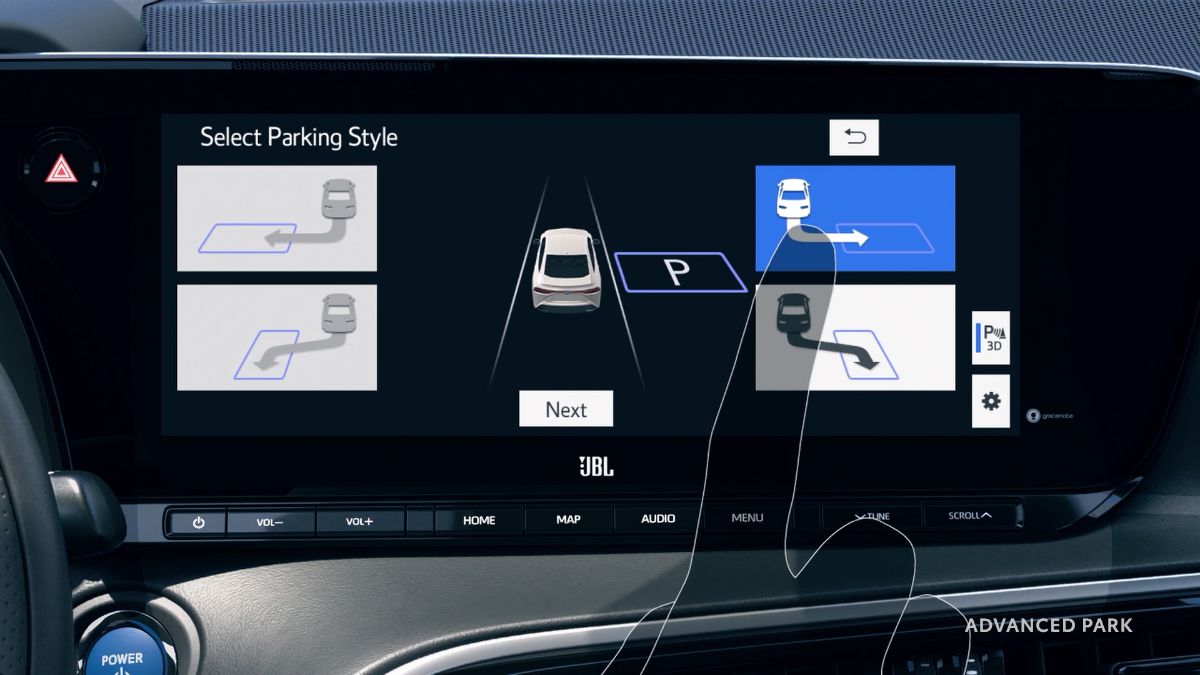
This multi-factorial analysis allows the system to distinguish between genuine hazards and harmless environmental elements like light snow accumulation or fallen leaves.
As a result, drivers receive meaningful alerts without the constant false alarms that lead to “alarm fatigue” with less discriminating systems. The user interface deserves particular recognition for its accessibility.
Toyota has carefully designed the visual and audio components to be immediately comprehensible regardless of technological proficiency. The display uses intuitive color coding (green for safe distances, yellow for caution, red for immediate concern) along with simple graphics that communicate positioning relative to obstacles.
Audio cues employ varying tones and frequencies that intuitively convey distance information without requiring the driver to divert visual attention from their surroundings.
Toyota has also prioritized system reliability across diverse environmental conditions. While many parking sensors become erratic during inclement weather, the APGS maintains consistent performance through rain, light snow, and temperature extremes. This environmental robustness means drivers can rely on the system year-round rather than experiencing seasonal fluctuations in functionality.
For drivers seeking parking assistance that provides genuine help without unnecessary interruptions, Toyota’s Advanced Parking Guidance System offers a thoughtfully refined solution that enhances the parking experience through practical functionality rather than technological showmanship.
Also Read: 10 Cars Where Rear Seatbelt Mounting Gets in the Way
5. Subaru EyeSight with Reverse Automatic Braking
Subaru’s EyeSight system with Reverse Automatic Braking (RAB) represents a fundamentally different approach to parking assistance that prioritizes safety and reliability over technical complexity.
While some manufacturers focus on adding ever more sensors and automated features, Subaru has concentrated on developing a system that performs its core functions exceptionally well in real-world conditions.
The foundation of EyeSight’s effectiveness as a parking aid lies in its dual-camera stereoscopic vision system, supplemented by traditional ultrasonic sensors.
This hybrid approach allows the system to perceive depth and movement patterns with remarkable accuracy, creating a more nuanced understanding of the vehicle’s surroundings than systems relying solely on ultrasonic technology.
The stereoscopic cameras can distinguish between objects of different sizes and densities, significantly reducing false positives from environmental factors like precipitation or vegetation.
What truly distinguishes Subaru’s implementation is its measured response to detected obstacles. Rather than immediately triggering alarms at the slightest detection, the system employs a graduated alert system that escalates based on genuine risk assessment.
Initial warnings are subtle and informative rather than jarring, becoming more insistent only as proximity increases or movement patterns suggest higher collision probability. This thoughtful calibration prevents the alert fatigue common with hypersensitive systems that cry wolf too frequently.
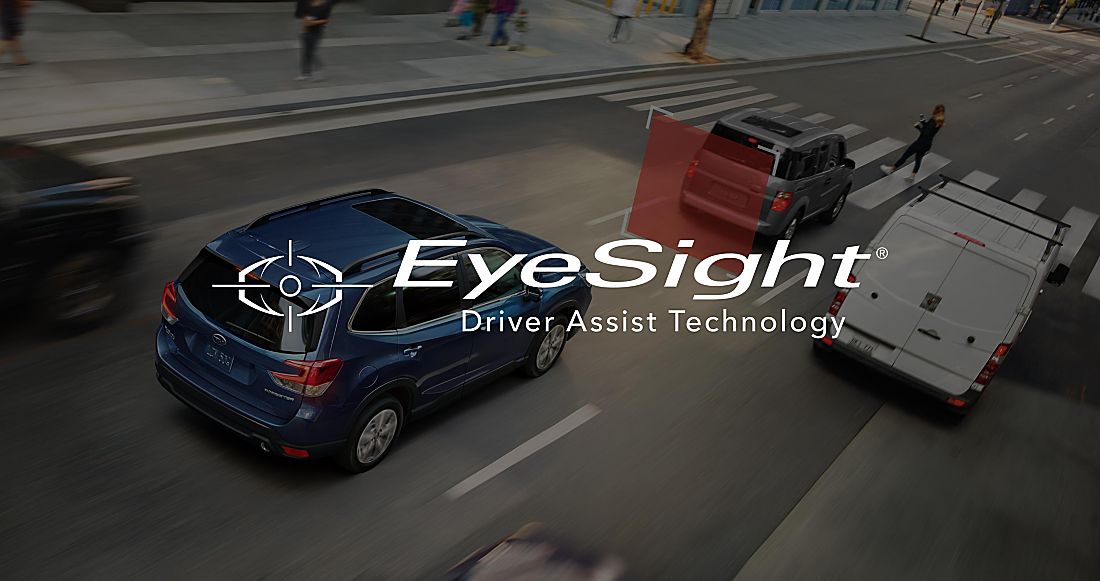
The Reverse Automatic Braking feature represents the culmination of Subaru’s safety-first philosophy, activating only when collision risk reaches critical levels.
Unlike some emergency braking systems that can trigger unexpectedly in benign situations, Subaru’s implementation demonstrates remarkable discrimination, intervening only when genuinely necessary.
This restraint builds driver trust in the system rather than encouraging deactivation due to excessive intervention. Particularly impressive is the system’s performance in challenging environmental conditions.
While many parking sensors become unreliable during rain or snow, Subaru’s EyeSight maintains consistent functionality across diverse weather scenarios.
The stereoscopic cameras are positioned inside the cabin and protected by the windshield, preventing the sensor degradation that often affects externally mounted systems over time.
This weatherproofing contributes to the system’s exceptional long-term reliability, with owners reporting consistent performance even after years of operation.
For drivers prioritizing genuine assistance over technological showmanship, Subaru’s EyeSight with Reverse Automatic Braking offers a refreshingly practical approach to parking assistance.
By focusing on core functionality and reliable performance rather than feature proliferation, Subaru has created a system that genuinely helps drivers navigate tight spaces without the frustration of hypersensitive alerts or unnecessary interventions.
5 Parking Sensors That Are Too Sensitive
These hyperactive systems transform routine parking into frustrating experiences with constant false alarms triggered by insignificant objects, slight grade changes, or even heavy rain.
Their excessive sensitivity creates the automotive equivalent of crying wolf, with many owners eventually ignoring or disabling the systems entirely after enduring too many panic-inducing warnings about nonexistent obstacles.
Navigating parking garages becomes particularly maddening as these overeager sensors detect every concrete column, overhead pipe, and parking stripe within a seemingly absurd detection radius.
What should be helpful parking assistance instead becomes a source of constant irritation, with drivers reporting embarrassing moments of slamming brakes for phantom obstacles that exist only in the sensor’s imagination.
1. First-Generation Nissan Around View Monitor
The first-generation Nissan Around View Monitor (AVM) system represents a cautionary tale in parking sensor implementation, demonstrating how even well-intentioned technology can become more hindrance than help when calibration and environmental adaptation are inadequate.
Introduced with considerable fanfare as a breakthrough in parking assistance, the system has become notorious among owners for its hypersensitivity and propensity for false alarms.
At the core of the system’s issues lies its overly aggressive detection thresholds. The ultrasonic sensors were calibrated with such low tolerance that they regularly mistake innocuous environmental elements for genuine obstacles.
Common triggers include light rainfall accumulating on the pavement, minor surface irregularities in parking lots, and even clusters of fallen leaves.
The result is a near-constant barrage of beeps and warnings during routine parking maneuvers, creating an experience akin to parking with an anxious passenger who gasps at every shadow.
The camera component of the system suffers from its own set of problems. While the bird’s-eye view concept was innovative, the first-generation implementation featured low-resolution cameras that produced grainy, often distorted images.
These visual limitations, combined with poorly optimized image processing, frequently resulted in the system misinterpreting harmless elements as potential hazards.
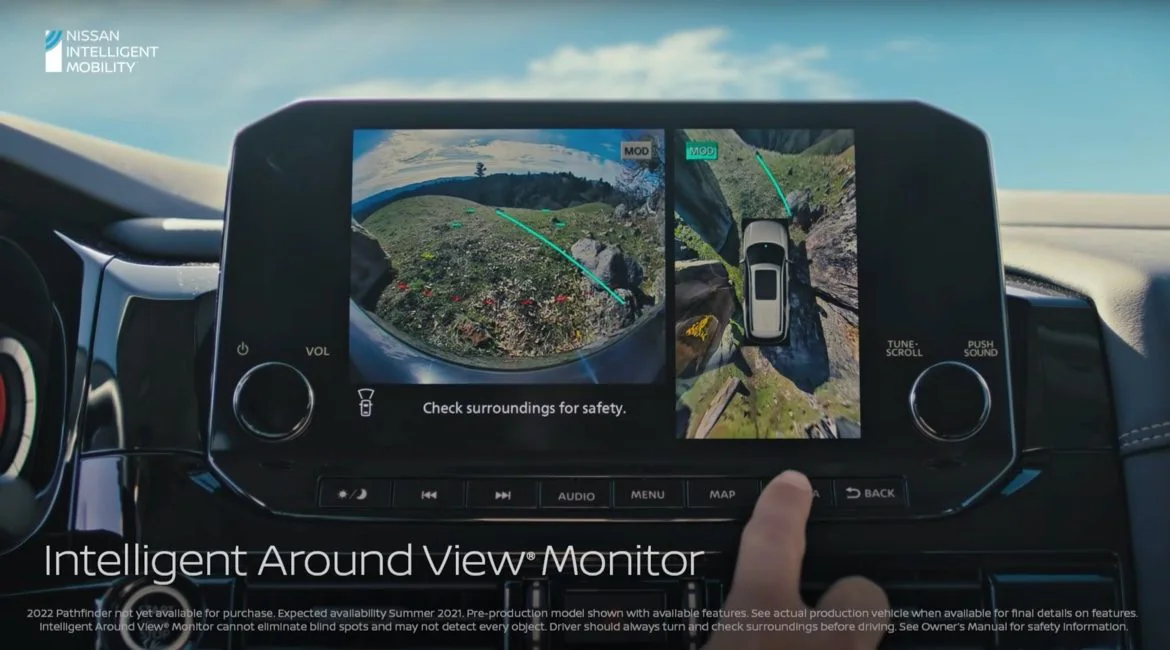
Drivers report particular frustration with the system’s tendency to trigger warnings when passing over painted lines in parking lots, apparently confusing these flat markings with three-dimensional obstacles.
Particularly problematic is the system’s behavior in adverse weather conditions. Rain or light snow can trigger a cascade of false alarms as the sensors misinterpret precipitation as solid objects.
More concerning still, the system sometimes enters a state owners have dubbed “panic mode,” where multiple sensors trigger simultaneously despite the absence of any discernible obstacles.
These phantom detections often result in sudden warning screens that obscure the navigation display at critical moments, creating dangerous distractions rather than enhancing safety.
The user interface compounds these technical shortcomings through its alarmist approach to notifications. Rather than employing graduated warnings that escalate with proximity, the first-generation AVM frequently jumps directly to urgent alerts accompanied by jarring audio signals.
This binary response pattern essentially silent or screaming with little middle ground prevents drivers from developing the intuitive understanding of space and distance that more nuanced systems facilitate.
The consequence is that many owners report simply disabling the system entirely, negating any potential benefits of the technology. For buyers seeking genuine parking assistance, the first-generation Nissan Around View Monitor serves as a prime example of how oversensitivity can transform a promising feature into an exercise in frustration.
2. Early Ford Active Park Assist
The early iterations of Ford’s Active Park Assist system exemplify how good technological concepts can be undermined by overzealous implementation and insufficient environmental adaptation.
Introduced to great fanfare as part of Ford’s push into driver assistance technologies, these early systems quickly gained notoriety among owners for their hair-trigger sensitivity and propensity for disruptive false alarms.
The system’s fundamental flaw lies in its sensor calibration philosophy, which appears to have been designed around the principle that false positives are preferable to false negatives.
While safety-conscious in theory, this approach resulted in a system that treats virtually any detected anomaly as a potential collision risk. The ultrasonic sensors respond dramatically to minor environmental elements that pose no actual threat to the vehicle, including small puddles, patches of uneven pavement, and even dense fog or heavy rain.
These frequent false alarms create a “boy who cried wolf” scenario, where drivers begin to distrust or ignore the system entirely. Particularly frustrating is the system’s behavior when attempting to parallel park in urban environments.
The sensors frequently misinterpret normal street features storm drains, curb irregularities, or even pronounced road camber as obstacles that prevent successful parking.
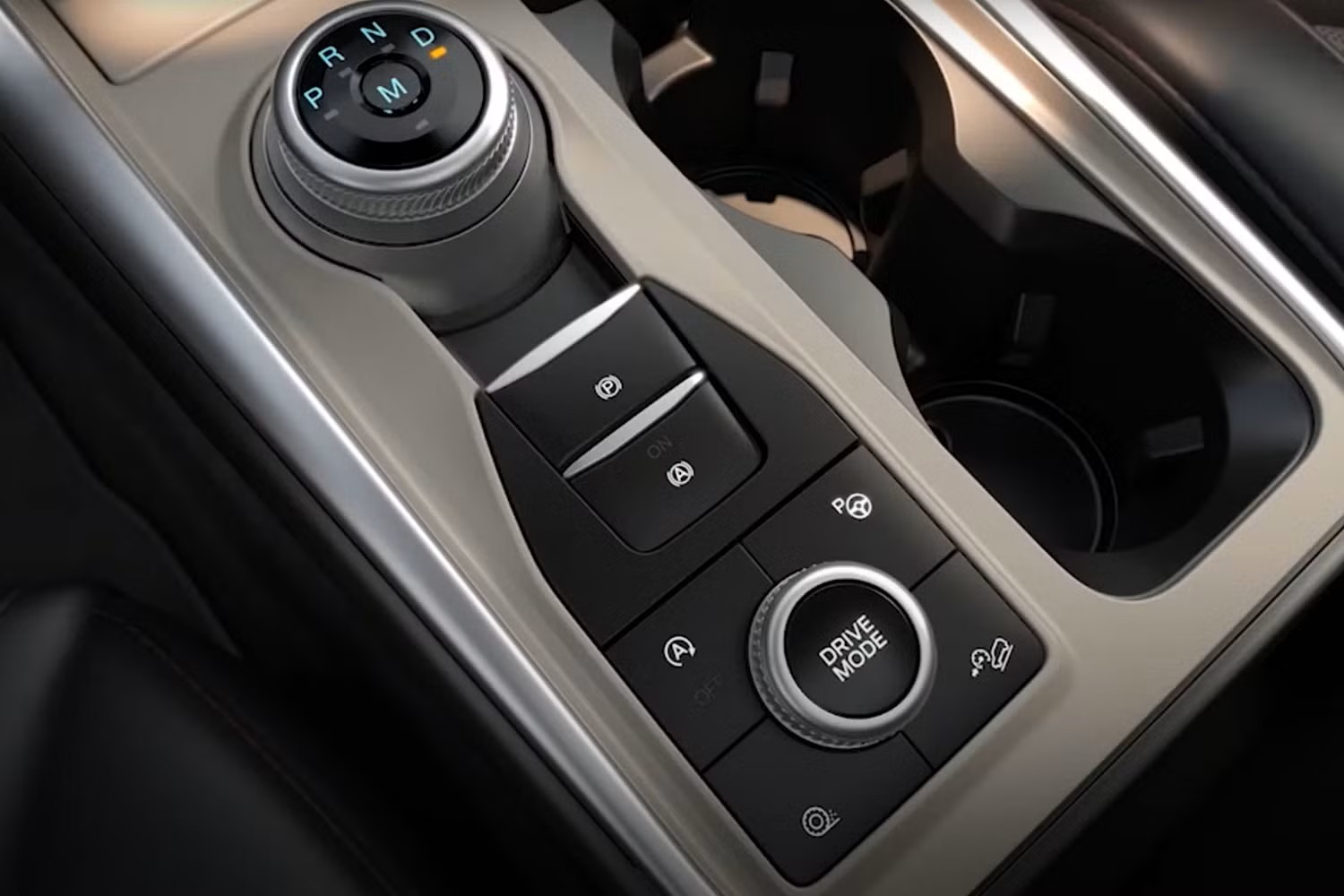
This hypersensitivity results in the system repeatedly abandoning viable parking maneuvers halfway through the process, leaving drivers awkwardly positioned in traffic while the system declares a perfectly adequate space “unsuitable.”
After several such experiences, many owners report reverting to manual parking techniques despite having paid a premium for the automated assistance feature.
The user interface exacerbates these technical shortcomings through its intrusive alert approach. Rather than employing subtle, graduated warnings, the early Ford system tends toward jarring audio alerts at maximum volume, often accompanied by flashing dashboard warnings that divert driver attention at critical moments.
This alarmist presentation style heightens driver stress rather than alleviating it, contradicting the very purpose of parking assistance technology. The absence of sensitivity adjustment options leaves drivers unable to tailor the system to their preferences or local conditions, creating a one-size-fits-none experience.
Weather adaptability represents another significant weakness. The system exhibits pronounced difficulty distinguishing between actual obstacles and environmental conditions during inclement weather.
Light snow coverage on the ground frequently triggers persistent warnings, while rain-soaked sensors can enter what owners describe as “panic mode,” generating continuous alerts regardless of surroundings.
This unreliability in less-than-ideal conditions severely limits the system’s practical utility in many regions. For drivers seeking parking assistance that enhances rather than complicates the driving experience, early Ford Active Park Assist serves as a cautionary example of how oversensitivity can transform a potentially valuable feature into an exercise in technological frustration.
3. Mitsubishi Multi-View Camera System
The Mitsubishi Multi-View Camera System represents a classic case of technological ambition outpacing practical implementation, resulting in a parking assistance package that frequently hinders rather than helps through its overzealous sensitivity.
Despite marketing that promised “peace of mind during parking,” many owners have found the system’s hyperactive nature creates more stress than it alleviates.
At the heart of the system’s problems lies its fundamentally flawed calibration approach. The ultrasonic sensors operate with excessively low detection thresholds that mistake numerous benign environmental elements for genuine obstacles.
Everyday scenarios that trigger false alarms include driving over small pebbles, approaching speed bumps at low speeds, and even passing near puddles after rainfall.
The camera system compounds these issues by employing overly aggressive image analysis algorithms that routinely misinterpret shadows and light reflections as solid objects, creating a perfect storm of false positives.
Particularly notorious is the system’s behavior in commercial parking facilities. The combination of painted lines, slight pavement irregularities, and changing light conditions creates an environment where the Mitsubishi system often generates almost continuous warnings.

Drivers report the disconcerting experience of being bombarded with urgent beeps and flashing dashboard alerts while slowly navigating through practically empty parking garages, with the system detecting phantom obstacles at every turn.
The user interface exacerbates these technical shortcomings through its alarmist approach to notifications. Rather than employing subtle, progressive alerts that intensify as proximity increases, the system frequently defaults to maximum-urgency warnings at the slightest detection.
This binary approach essentially quiet or crisis with little gradation between prevents drivers from developing the intuitive distance awareness that more nuanced systems facilitate.
Many owners report developing “alarm fatigue,” a psychological state where they begin ignoring all system warnings due to the overwhelming frequency of false alerts.
Weather adaptability represents another significant weakness. The system demonstrates pronounced difficulty distinguishing between actual obstacles and environmental conditions during anything but ideal weather.
Light snow accumulation frequently triggers persistent warnings, while rain-covered sensors often generate continuous alerts regardless of surroundings. This unreliability severely limits the system’s practical utility in many climates and seasons.
The absence of sensitivity adjustment options means drivers cannot tailor the system to seasonal conditions or personal preferences, leaving them stuck with a one-setting-fits-none approach.
For drivers seeking parking assistance that enhances rather than detracts from the driving experience, the Mitsubishi Multi-View Camera System serves as a prime example of how oversensitivity can transform an innovative concept into a practical disappointment.
4. Early Kia Park Assist System
The early iterations of Kia’s Park Assist System exemplify how technological good intentions can be undermined by insufficient refinement and environmental adaptation.
Initially promoted as a user-friendly aid for drivers uncomfortable with parking maneuvers, the system quickly became known among owners for its hypersensitive nature and proclivity for disruptive false alarms that undermined its usefulness.
The system’s fundamental weakness stems from its sensor calibration philosophy, which appears to have prioritized maximum detection sensitivity over practical discrimination.
The ultrasonic sensors respond to minor environmental variations that pose no actual threat to the vehicle, creating an experience akin to parking with an exceptionally nervous passenger.
Common false triggers include small puddles, patches of uneven pavement, blowing leaves, and even heavy rain droplets. These frequent false positives create a “cry wolf” scenario where drivers begin to disregard all system warnings, negating any safety benefit the technology might otherwise provide.
Particularly problematic is the system’s tendency to confuse normal urban parking environments with obstacle-laden hazard zones. The sensors routinely misinterpret standard street features decorative pavement textures, normal curb heights, or minor road camber as impassable obstacles.
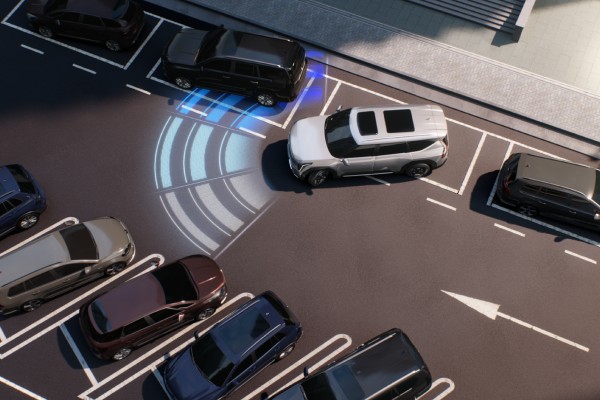
This hypersensitivity results in the system frequently rejecting perfectly adequate parking spaces or interrupting ongoing parking maneuvers with unnecessary warnings.
After several such experiences, many owners report simply disabling the system entirely, despite having paid a premium for this supposedly helpful feature.
The user interface compounds these technical shortcomings through its intrusive alert approach. Rather than employing subtle, graduated warnings that escalate with proximity, the early Kia system tends toward jarring audio alerts at maximum volume accompanied by persistent dashboard warnings.
This alarmist presentation style increases driver stress rather than reducing it, contradicting the very purpose of parking assistance technology. The lack of customization options leaves drivers unable to adjust sensitivity levels to match their preferences or adapt to different parking environments.
Weather resilience represents another significant weakness in the system’s design. The sensors exhibit pronounced difficulty distinguishing between actual obstacles and environmental conditions during anything less than ideal weather.
Light snow frequently triggers continuous warnings, while rain-covered sensors can enter what owners have dubbed “panic mode,” generating persistent alerts regardless of surroundings. This unreliability in common weather conditions severely limits the system’s practical utility in many regions.
For drivers seeking parking assistance that enhances rather than complicates their driving experience, the early Kia Park Assist System stands as a cautionary example of how oversensitivity can transform a potentially valuable feature into a source of ongoing frustration.
5. Chevrolet Rear Park Assist
The Chevrolet Rear Park Assist system, particularly in its earlier iterations, stands as a prime example of how well-intentioned technology can become counterproductive when implemented with excessive sensitivity and insufficient environmental adaptation.
Despite being marketed as a feature to enhance driver confidence, many owners have found the system’s hyperactive nature creates more anxiety than it alleviates during routine parking maneuvers.
The core issue lies in the system’s fundamentally flawed detection thresholds. The ultrasonic sensors operate with such heightened sensitivity that they routinely mistake innocuous environmental elements for genuine obstacles.
Common scenarios triggering false alarms include approaching moderately steep driveways, backing up on slightly uneven surfaces, or even driving near low vegetation like ornamental grasses.
This hair-trigger response creates an experience akin to parking with an exceedingly anxious passenger who gasps at every shadow and movement, regardless of actual risk.
Particularly frustrating is the system’s behavior in common everyday parking scenarios. The sensors frequently misinterpret normal environmental features slight pavement texture changes, small drainage channels, or even pronounced road camber—as significant obstacles requiring immediate driver attention.

This hypersensitivity results in a near-constant stream of warnings during routine maneuvers in parking facilities, creating cognitive overload rather than providing helpful assistance.
The consequence is that many owners report simply ignoring the system’s alerts, negating any potential safety benefits the technology might otherwise provide.
The user interface compounds these technical shortcomings through its binary approach to alerts. Rather than employing nuanced, graduated warnings that escalate proportionally with proximity, the Chevrolet system frequently defaults to maximum-urgency notifications at the slightest detection.
This all-or-nothing methodology essentially silent or screaming with little middle ground prevents drivers from developing the intuitive understanding of space and distance that more refined systems facilitate.
The absence of customization options leaves drivers unable to adjust sensitivity levels to match their preferences or adapt to different parking environments.
Weather resilience represents another significant weakness. The system demonstrates marked difficulty distinguishing between actual obstacles and environmental conditions during anything less than ideal weather.
Light snow accumulation frequently triggers persistent warnings, while rain-covered sensors often generate continuous alerts regardless of surroundings. This unreliability in common weather conditions severely limits the system’s practical utility in many geographic regions.
For drivers seeking parking assistance that genuinely enhances rather than detracts from the driving experience, the Chevrolet Rear Park Assist system serves as a cautionary example of how excessive sensitivity can transform a potentially valuable feature into a source of ongoing driver frustration.
Also Read: 5 Cars With Factory Batteries That Last 6+ years and 5 That Don’t Make 3

